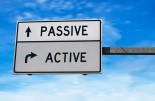Scientific Beta: The performance of rewarded factors since COVID
Scientific Beta: The performance of rewarded factors since COVID

By Daniel Aguet, Deputy CEO & Index Director at Scientific Beta
Factor strategies are appealing for investors because they provide exposures to rewarded risk factors in addition to the market risk and hence are a source of superior risk-adjusted performance over the long-term compared to cap-weighted benchmarks.
There is a limited set of consensual rewarded risk factors that are backed by academic research. Their long-term reward is justified by economic rationale. Investors require compensation for additional risks brought by factor exposures in bad times, when assets that correspond to a given factor tilt tend to provide poor payoffs.
The COVID crisis was a good illustration of the materialisation of these additional risks, such as the cost of reversibility, for the Value factor. In effect, value firms did underperform growth firms during the pandemic because they are made up of assets in place that are costly to reverse. They were not capable of adapting their business to the lockdown measures imposed and their stock price fell dramatically relatively to growth stocks.
We reviewed the performance of rewarded factors in the US market since the beginning of 2020 up to June 2022 through the lens of two important characteristics, which are intangibility and social distancing. These two characteristics were particularly important during the COVID crisis, since lockdown measures affected more companies with low intangible capital that relied on tangible assets to generate their cash flows and companies that could not use teleworking to overcome social distancing measures and continue their activities.
Performance of L/S factors in 2020
There is a set of six consensus-based Long/Short (L/S) rewarded risk factors backed by academic research, namely Size, Value, Momentum, Low Volatility, High Profitability and Low Investment. Out of the six L/S factors, four had negative performance in 2020: -22.6% for Value, -16.4% for Low Volatility, -16.2% for Low Investment and -4.7% for Size.
The performance of the Value, Low Investment and Low Volatility factors was extreme compared to historical standards. For instance, if we focus on the Value factor, its -22.6% loss in 2020 was below the worst 5% 1-year rolling return computed over a 45-year sample, which stands at -19.1%. The same is true for the Low Volatility and Low Investment factors, which demonstrates how strong the impact of the COVID crisis and the lockdown measures was on these three factors.
Conversely, the Momentum and High Profitability factors were the main beneficiary of the crisis since they had positive performance in 2020, +13.2% and +11.4% respectively. Not surprisingly, the average performance of the six L/S factors in 2020 was negative by -5.5%. This performance might seem relatively modest compared to the losses of the other rewarded factors like Value, but it was nonetheless extreme when compared to historical standards, since it is well below the worst 5% 1-year rolling return of -2.0%.
Performance of L/S factors in 2021 and 2022
During the subsequent years, the average performance of L/S factors was driven by the strong rebound of the same factors that suffered in 2020. In effect, Value had the strongest rebound with a performance of 8.0% in 2021 and 12.5% in 2022, followed by Low Investment (+7.3% in 2021 and 12.3% in 2022), Low Volatility (+8.6% in 2021 and +4.6% in 2022) and Size (+4.9% in 2021 and +2.2% in 2022).
Conversely, the Momentum and High Profitability factors, which benefited from the COVID crisis in 2020, had a reversal in performance. Momentum had an extreme loss of -22.2% in 2021 and High Profitability lost -9.8% in 2022 after gaining only 1.4% in 2021. Hence, the performance of the L/S factor portfolio was up by 1.5% in 2021 and 5% in 2022, which corresponds to a full recovery of the loss incurred in 2020.
Explaining the differences in performance
The COVID crisis was such an unexpected event that it had dramatic consequences on the economy. Industries were not affected in the same ways. Some of them were almost completely shut down, like airline companies, while others were favoured, like online retailers thanks to surging demand.
Companies with high intangible assets and relying mostly on their intellectual property to generate their revenues were less impacted than companies relying on hard assets such as plants or production equipment, which had to almost shut down their activities entirely. Similarly, companies which were less affected by social distancing measures because they were able to operate their activities remotely have been less impacted than companies which were unable to implement teleworking to continue their activities.
The link between L/S rewarded factors and intangibility and social distancing characteristics was strong. In effect, more than 50% of the return variability of the Value, High Profitability and Low Investment factors can be attributed to both intangibility and social distancing characteristics. Moreover, except for the Low Volatility factor, all rewarded factors had a statistically significant sensitivity to intangibility or social distancing characteristics. The Size, Value and Low Investment factors had a positive exposure, while High Profitability and Momentum had a negative one.
Finally, all four factors that had losses in 2020, namely Size, Value, Low Volatility and Low Investment, had a larger proportion of stocks composing their long branch with low intangible or low teleworking characteristics than stocks making up their short branch. Conversely, the Momentum and High Profitability factors, which had positive performance in 2020, had a larger proportion of stocks composing their long branch with high intangible or high teleworking characteristics than stocks composing their short branch.
This underscores the importance of the intangibility and social distancing characteristics in explaining the performance of rewarded factors since the beginning of 2020.
Annus horribilis for rewarded risk factors
2020 was an annus horribilis for rewarded risk factors due to extreme market conditions following the COVID crisis. Nonetheless, they recovered from their losses in less than one and a half years.
Intangibility and social distancing characteristics played a key role in explaining the short-term performance of rewarded factors, especially for Value, High Profitability and Low Investment. However, the losses incurred in 2020 are consistent with factor investing’s risk-based rationale and should be expected by investors. In effect, investors are rewarded over the long-term because it is a compensation for the additional risks that they are taking by being exposed to these factors in bad times.
Moreover, the reward of risk factors is expected to vary and to be driven by macroeconomic cycles, hence there is no reason to expect them to deliver steady outperformance year after year like a coupon-paying bond would. Therefore, the long-term reward of the consensual risk factors will not disappear in the future, and factor strategies, if properly designed, will be able to deliver their promise of long-term risk-adjusted outperformance.


